14 min to read
LangChain笔记
LangChain笔记
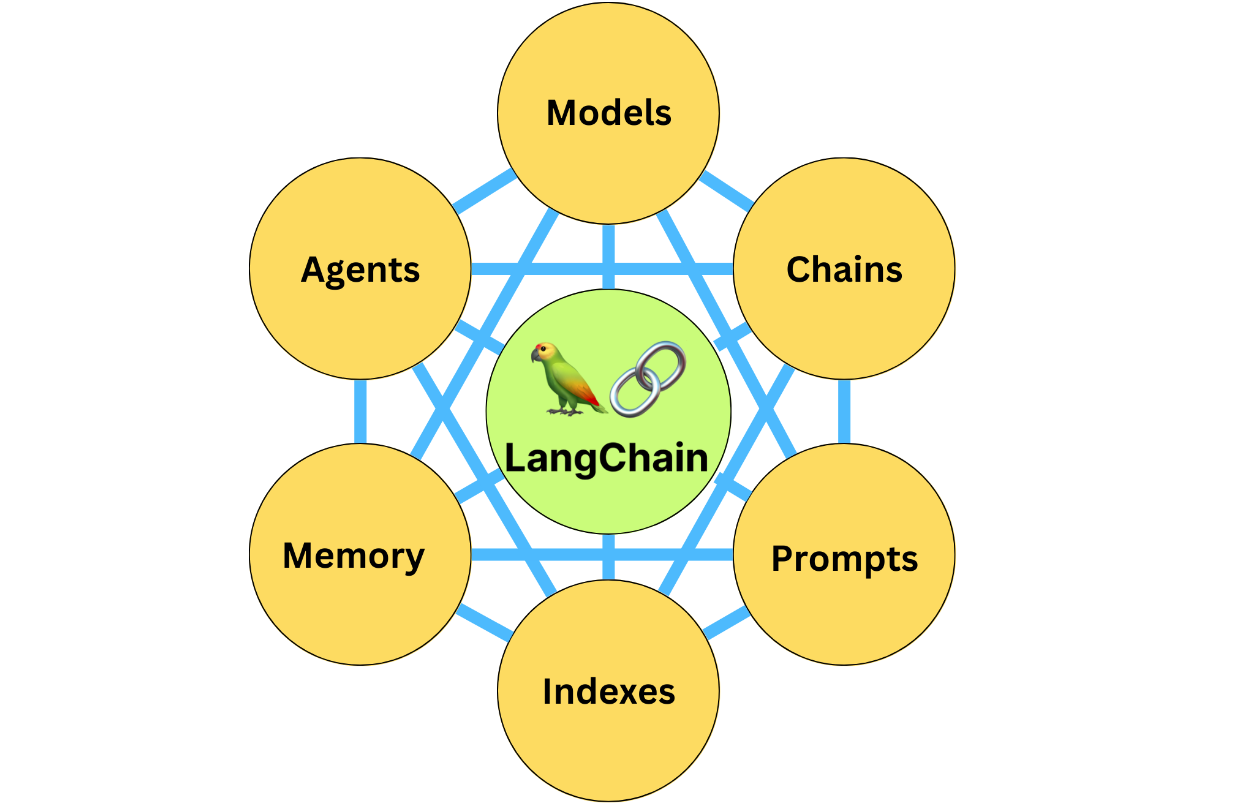
LangChain本质上是一个框架,所谓框架就是对某一门关键技术的封装,使之应用起来更加的方便;
简单场景下,原生API足矣,使用框架反而可能有些多余,框架主要是对于复杂应用而言的。
LangChain是对LLM的封装,LLM(大语言模型)可以简单理解为文本对话系统,典型的例子就是chatGPT,输入一段文字描述,可以是任意的问题,然后会返回相应的回答;
复杂的框架通常对应着一系列的组件、模块,下面进行逐一介绍
prompts模板
open AI原生的API是这样调用的
import openai
response = openai.ChatCompletion.create(
model = "gpt-3.5-turbo",
messages = [
{"role": "system", "content": "You are a helpful assistant."},
{"role": "user", "content": "Who won the world series in 2020?"},
{"role": "assistant", "content": "The Los Angeles Dodgers won the World Series in 2020."},
{"role": "user", "content": "Where was it played?"}
]
)
print(response.choices[0].message["content"])
LangChain对openAI的api进行了封装,通过模板的方式,使得在特定场景下,很多逻辑可以复用,提升开发效率,示例如下:
from langchain.chat_models import ChatOpenAI
from langchain.prompts import ChatPromptTemplate
chat = ChatOpenAI(temperature=0.0, model=llm_model)
template_string = """Translate the text \
that is delimited by triple backticks \
into a style that is {style}. \
text: ```{text}```
"""
prompt_template = ChatPromptTemplate.from_template(template_string)
customer_style = """American English \
in a calm and respectful tone
"""
customer_email = """
Arrr, I be fuming that me blender lid \
flew off and splattered me kitchen walls \
with smoothie! And to make matters worse, \
the warranty don't cover the cost of \
cleaning up me kitchen. I need yer help \
right now, matey!
"""
customer_messages = prompt_template.format_messages(
style=customer_style,
text=customer_email)
customer_response = chat(customer_messages)
print(customer_response.content)
上面的代码看起来很长,但如果类似的逻辑需要处理很多次,就会显著减少代码量,提升效率;
prompts template本质上就是总结出典型的、通用的、好用的prompts格式,中间利用占位符来表示可变内容,这样每次使用只需要提供那些变量,复用那些通用的格式,达到高效、好用的目的;
output parser
在prompts中指定返回的格式和内容,然后自动化解析,示例如下:
# 在prompts中增加如下要求,约束返回的格式和内容
"""
Format the output as JSON with the following keys:
gift
delivery_days
price_value
"""
"""
但是LLM本质上返回的是字符串,只能约束返回json字符串,要处理这些内容,最佳的方式就是先转成json或者dict对象,然后再做信息提取和处理就会方便很多;
这个时候output parser就应运而生了,完整的代码量较多 这里截取关键的代码片段
"""
from langchain.output_parsers import ResponseSchema
from langchain.output_parsers import StructuredOutputParser
gift_schema = ResponseSchema(name="gift",
description="Was the item purchased\
as a gift for someone else? \
Answer True if yes,\
False if not or unknown.")
delivery_days_schema = ResponseSchema(name="delivery_days",
description="How many days\
did it take for the product\
to arrive? If this \
information is not found,\
output -1.")
price_value_schema = ResponseSchema(name="price_value",
description="Extract any\
sentences about the value or \
price, and output them as a \
comma separated Python list.")
response_schemas = [gift_schema,
delivery_days_schema,
price_value_schema]
output_parser = StructuredOutputParser.from_response_schemas(response_schemas)
format_instructions = output_parser.get_format_instructions()
"""
返回内容:
{
"gift": true,
"delivery_days": 2,
"price_value": ["It's slightly more expensive than the other leaf blowers out there, but I think it's worth it for the extra features."]
}
"""
output_dict = output_parser.parse(response.content)
output_dict.get('delivery_days')
memory
LLM本质上是文本输入到输出的映射,自身不具备记忆功能,但很多场景下多轮对话,是需要依赖上下文背景的,比如:
"""
human: "Hi, my name is Andrew"
assistant: "Hello Andrew! It's nice to meet you. How can I assist you today?"
human: "What is 1+1?"
assistant: "1+1 equals 2. Is there anything else you would like to know?"
human: "What is my name?"
assistant: "Your name is Andrew."
"""
如果没有上下文信息,最后一个问题AI是没办法回答的,LangChain提供了丰富的上下文管理方式,并且自动加入到prompts中,大幅提升开发效率;
方式一:ConversationBufferMemory
存储所有的上下文信息,更符合人类直觉认知,似乎就应该这样做;
这样做也会带来一些弊端:① 上下文信息太长,模型响应可能会比较慢;② 可能超出模型最大输入限制
from langchain.memory import ConversationBufferMemory
memory = ConversationBufferMemory(return_messages=True)
memory.save_context({"input": "hi"}, {"output": "whats up"})
from langchain.llms import OpenAI
from langchain.chains import ConversationChain
llm = ChatOpenAI(temperature=0) # 这里如果使用OpenAI,会报:InvalidRequestError
conversation = ConversationChain(
llm=llm,
verbose=True,
memory=memory
)
conversation.predict(input="Hi there!")
方式二:ConversationBufferWindowMemory
按照对话轮次记忆,通过参数设定需要记忆的对话轮次
方式三:ConversationTokenBufferMemory
按照token数量记忆
方式四:ConversationSummaryBufferMemory
多轮对话之后,利用LLM写一个summary,同时可以限制最大token数量;
方式五:ConversationKnowledgeGraphMemory
方式六:ConversationEntityMemory
LLM chain
chain feature本质上是对一系列的[input → output]的封装整合;基本单元是:LLMChain
一个LLMChain可以理解为一个input → output的映射;
from langchain.chat_models import ChatOpenAI
from langchain.prompts import ChatPromptTemplate
from langchain.chains import LLMChain
llm = ChatOpenAI(temperature=0.9, model=llm_model)
prompt = ChatPromptTemplate.from_template(
"What is the best name to describe \
a company that makes {product}?"
)
chain = LLMChain(llm=llm, prompt=prompt)
product = "Queen Size Sheet Set"
chain.run(product)
SimpleSequentialChain
每一个chain只有一个输入、输出;
上一个chain的输出为下一个chain的输入,类似于单链表;
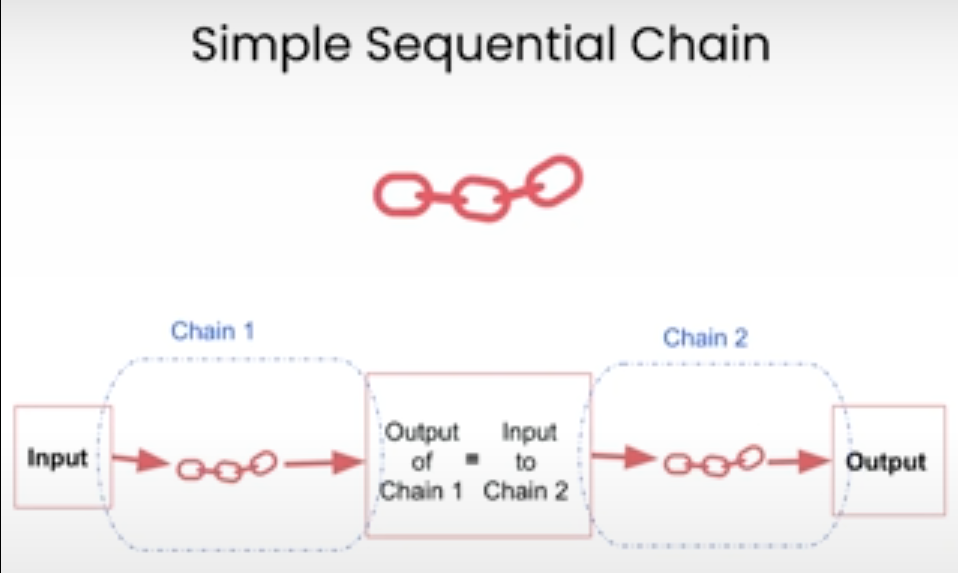
from langchain.chains import SimpleSequentialChain
llm = ChatOpenAI(temperature=0.9, model=llm_model)
# prompt template 1
first_prompt = ChatPromptTemplate.from_template(
"What is the best name to describe \
a company that makes {product}?"
)
# Chain 1
chain_one = LLMChain(llm=llm, prompt=first_prompt)
# prompt template 2
second_prompt = ChatPromptTemplate.from_template(
"Write a 20 words description for the following \
company:{company_name}"
)
# chain 2
chain_two = LLMChain(llm=llm, prompt=second_prompt)
overall_simple_chain = SimpleSequentialChain(chains=[chain_one, chain_two],
verbose=True
)
overall_simple_chain.run(product)
SequentialChain
每一个chain可以拥有多个输入,连接前面的多个chain,但通常只有1个输出
需要显式指定每个chain每一个输入、输出的名称;
改造成多个输出也不难,就是两个或者多个chain,输入一样 输出不一样,相当于变相实现了多输入对应多输出;
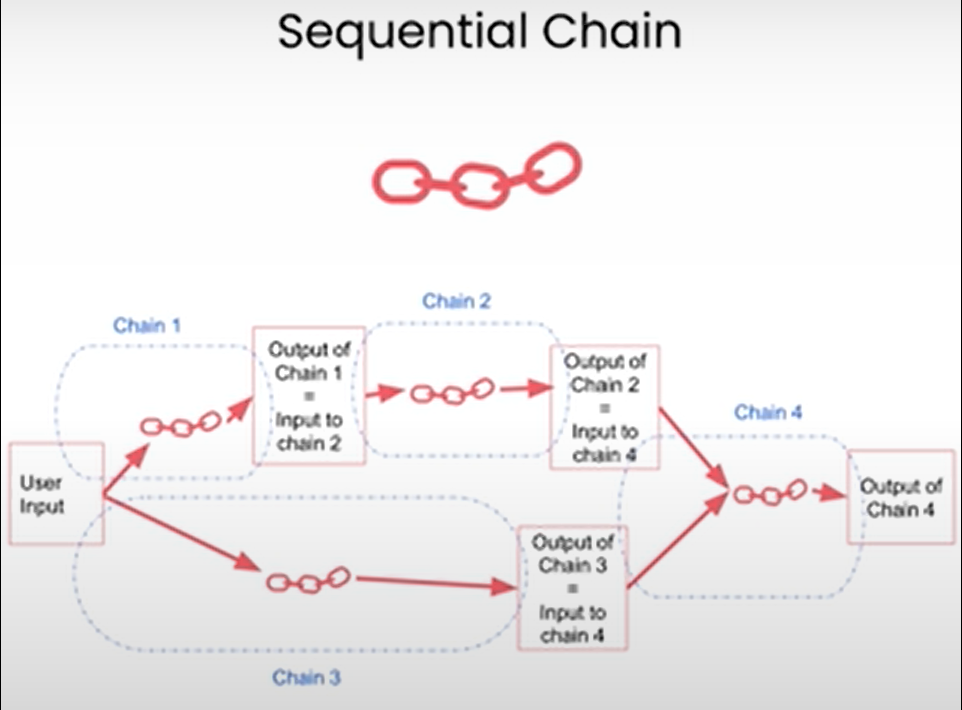
from langchain.chains import SequentialChain
llm = ChatOpenAI(temperature=0.9, model=llm_model)
# prompt template 1: translate to english
first_prompt = ChatPromptTemplate.from_template(
"Translate the following review to chinese:"
"\n\n{Review}"
)
# chain 1: input= Review and output= English_Review
chain_one = LLMChain(llm=llm, prompt=first_prompt,
output_key="Chinese_Review"
)
second_prompt = ChatPromptTemplate.from_template(
"Can you summarize the following review in 1 sentence, use chinese:"
"\n\n{Chinese_Review}"
)
# chain 2: input= English_Review and output= summary
chain_two = LLMChain(llm=llm, prompt=second_prompt,
output_key="summary"
)
# prompt template 3: translate to english
third_prompt = ChatPromptTemplate.from_template(
"What language is the following review:\n\n{Review}"
)
# chain 3: input= Review and output= language
chain_three = LLMChain(llm=llm, prompt=third_prompt,
output_key="language"
)
# prompt template 4: follow up message
fourth_prompt = ChatPromptTemplate.from_template(
"Write a follow up response to the following "
"summary in the specified language:"
"\n\nSummary: {summary}\n\nLanguage: {language}"
)
# chain 4: input= summary, language and output= followup_message
chain_four = LLMChain(llm=llm, prompt=fourth_prompt,
output_key="followup_message"
)
# overall_chain: input= Review
# and output= English_Review,summary, followup_message
overall_chain = SequentialChain(
chains=[chain_one, chain_two, chain_three, chain_four],
input_variables=["Review"],
output_variables=["Chinese_Review", "summary","followup_message"],
verbose=True
)
review = df.Review[5]
overall_chain(review)
Router Chain
思路:预先定义一系列的chain,然后根据LLM的返回值,选择chain;
实现:定义router chain 和 destination_chains;router chain访问LLM,返回destination chains的name;
然后根据name,选择chain
chain = MultiPromptChain(router_chain=router_chain,
destination_chains=destination_chains,
default_chain=default_chain, verbose=True
)
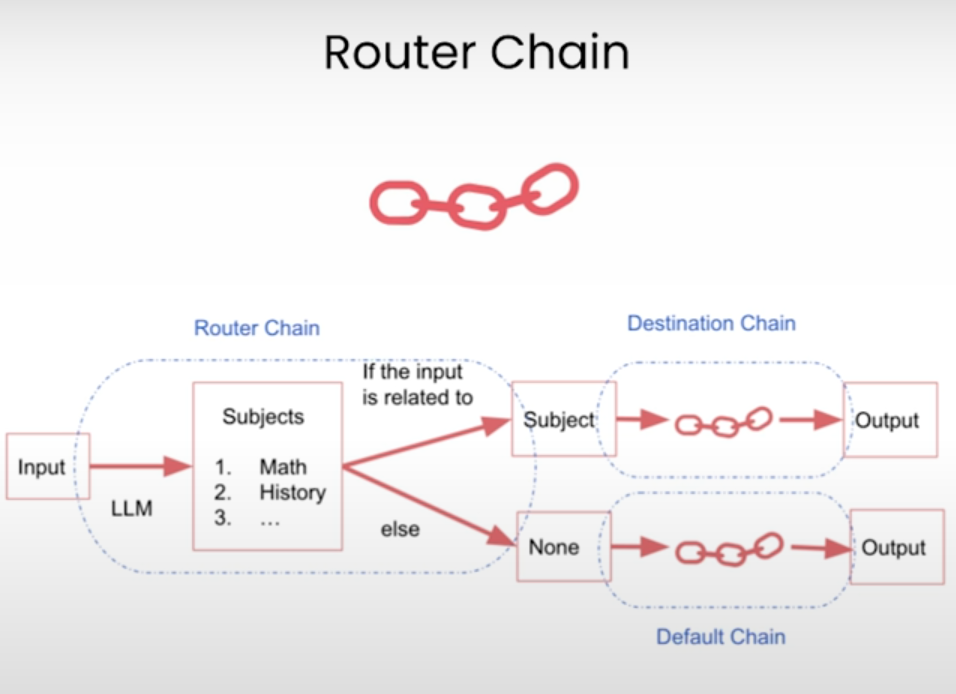 完整示例:
完整示例:
physics_template = """You are a very smart physics professor. \
You are great at answering questions about physics in a concise\
and easy to understand manner. \
When you don't know the answer to a question you admit\
that you don't know.
Here is a question:
{input}"""
math_template = """You are a very good mathematician. \
You are great at answering math questions. \
You are so good because you are able to break down \
hard problems into their component parts,
answer the component parts, and then put them together\
to answer the broader question.
Here is a question:
{input}"""
history_template = """You are a very good historian. \
You have an excellent knowledge of and understanding of people,\
events and contexts from a range of historical periods. \
You have the ability to think, reflect, debate, discuss and \
evaluate the past. You have a respect for historical evidence\
and the ability to make use of it to support your explanations \
and judgements.
Here is a question:
{input}"""
computerscience_template = """ You are a successful computer scientist.\
You have a passion for creativity, collaboration,\
forward-thinking, confidence, strong problem-solving capabilities,\
understanding of theories and algorithms, and excellent communication \
skills. You are great at answering coding questions. \
You are so good because you know how to solve a problem by \
describing the solution in imperative steps \
that a machine can easily interpret and you know how to \
choose a solution that has a good balance between \
time complexity and space complexity.
Here is a question:
{input}"""
prompt_infos = [
{
"name": "physics",
"description": "Good for answering questions about physics",
"prompt_template": physics_template
},
{
"name": "math",
"description": "Good for answering math questions",
"prompt_template": math_template
},
{
"name": "History",
"description": "Good for answering history questions",
"prompt_template": history_template
},
{
"name": "computer science",
"description": "Good for answering computer science questions",
"prompt_template": computerscience_template
}
]
from langchain.chains.router import MultiPromptChain
from langchain.chains.router.llm_router import LLMRouterChain,RouterOutputParser
from langchain.prompts import PromptTemplate
llm = ChatOpenAI(temperature=0, model=llm_model)
destination_chains = {}
for p_info in prompt_infos:
name = p_info["name"]
prompt_template = p_info["prompt_template"]
prompt = ChatPromptTemplate.from_template(template=prompt_template)
chain = LLMChain(llm=llm, prompt=prompt)
destination_chains[name] = chain
destinations = [f"{p['name']}: {p['description']}" for p in prompt_infos]
destinations_str = "\n".join(destinations)
default_prompt = ChatPromptTemplate.from_template("{input}")
default_chain = LLMChain(llm=llm, prompt=default_prompt)
MULTI_PROMPT_ROUTER_TEMPLATE = """Given a raw text input to a \
language model select the model prompt best suited for the input. \
You will be given the names of the available prompts and a \
description of what the prompt is best suited for. \
You may also revise the original input if you think that revising\
it will ultimately lead to a better response from the language model.
<< FORMATTING >>
Return a markdown code snippet with a JSON object formatted to look like:
\```json
}}
\```
REMEMBER: "destination" MUST be one of the candidate prompt \
names specified below OR it can be "DEFAULT" if the input is not\
well suited for any of the candidate prompts.
REMEMBER: "next_inputs" can just be the original input \
if you don't think any modifications are needed.
<< CANDIDATE PROMPTS >>
{destinations}
<< INPUT >>
<< OUTPUT (remember to include the ```json)>>"""
router_template = MULTI_PROMPT_ROUTER_TEMPLATE.format(
destinations=destinations_str
)
router_prompt = PromptTemplate(
template=router_template,
input_variables=["input"],
output_parser=RouterOutputParser(),
)
router_chain = LLMRouterChain.from_llm(llm, router_prompt)
chain = MultiPromptChain(router_chain=router_chain,
destination_chains=destination_chains,
default_chain=default_chain, verbose=True
)
chain.run("What is black body radiation?")
chain.run("what is 2 + 2")
chain.run("Why does every cell in our body contain DNA?")
Question Answer
这个feature本质上属于RAG(Retrieval-Augmented Generation)技术;
也就是基于一系列的文档,让LLM对问题的回答更加的准确,这些文档可能是私域内的或者是比较新的数据、信息等,不在大模型训练范围内的;
通常会先将文档向量化,以便于搜索查询相关主题;
调用大模型之前,会先通过向量数据库,查询到相关数据/信息,一起传送给大模型;
所谓的向量化,就是将一段文本(可能是一个句子,一个段落或者一个文档)编码成一个向量,便于查找;
如果基于原生API,流程大概是这样的;
from langchain.embeddings import OpenAIEmbeddings
embeddings = OpenAIEmbeddings()
embed = embeddings.embed_query("Hi my name is Harrison")
print(len(embed)) #1536
# 将一系列的文档编码成向量
db = DocArrayInMemorySearch.from_documents(
docs,
embeddings
)
# 查找最相似的向量
query = "Please suggest a shirt with sunblocking"
docs = db.similarity_search(query)
# 调用大模型
qdocs = "".join([docs[i].page_content for i in range(len(docs))])
response = llm.call_as_llm(f"{qdocs} Question: Please list all your \
shirts with sun protection in a table in markdown and summarize each one.")
LangChain 封装成了如下的使用方式:
retriever = db.as_retriever()
qa_stuff = RetrievalQA.from_chain_type(
llm=llm,
chain_type="stuff",
retriever=retriever,
verbose=True
)
query = "Please list all your shirts with sun protection in a table \
in markdown and summarize each one."
response = qa_stuff.run(query)
参考资料
https://learn.deeplearning.ai/courses/langchain/lesson/1/introduction
https://www.openaidoc.com.cn/docs/guides/chat
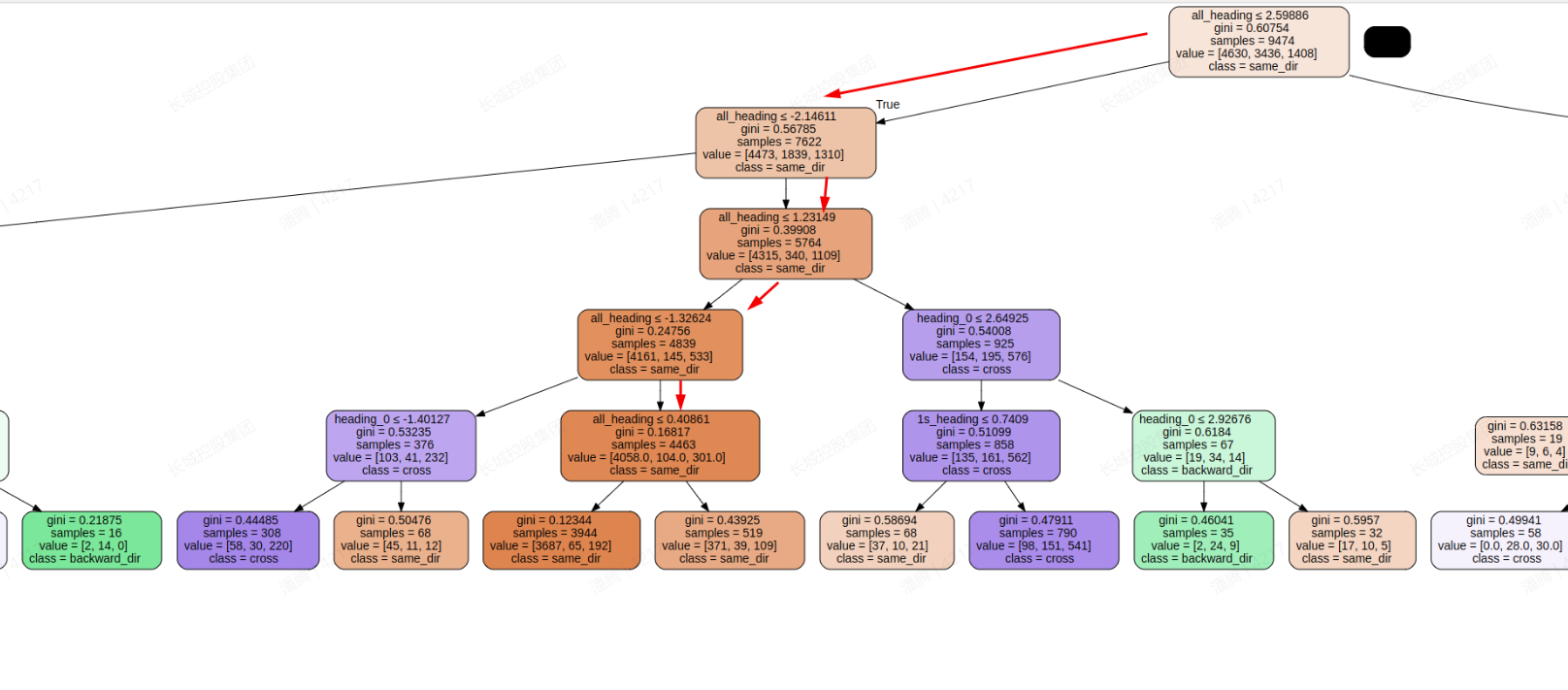
Comments